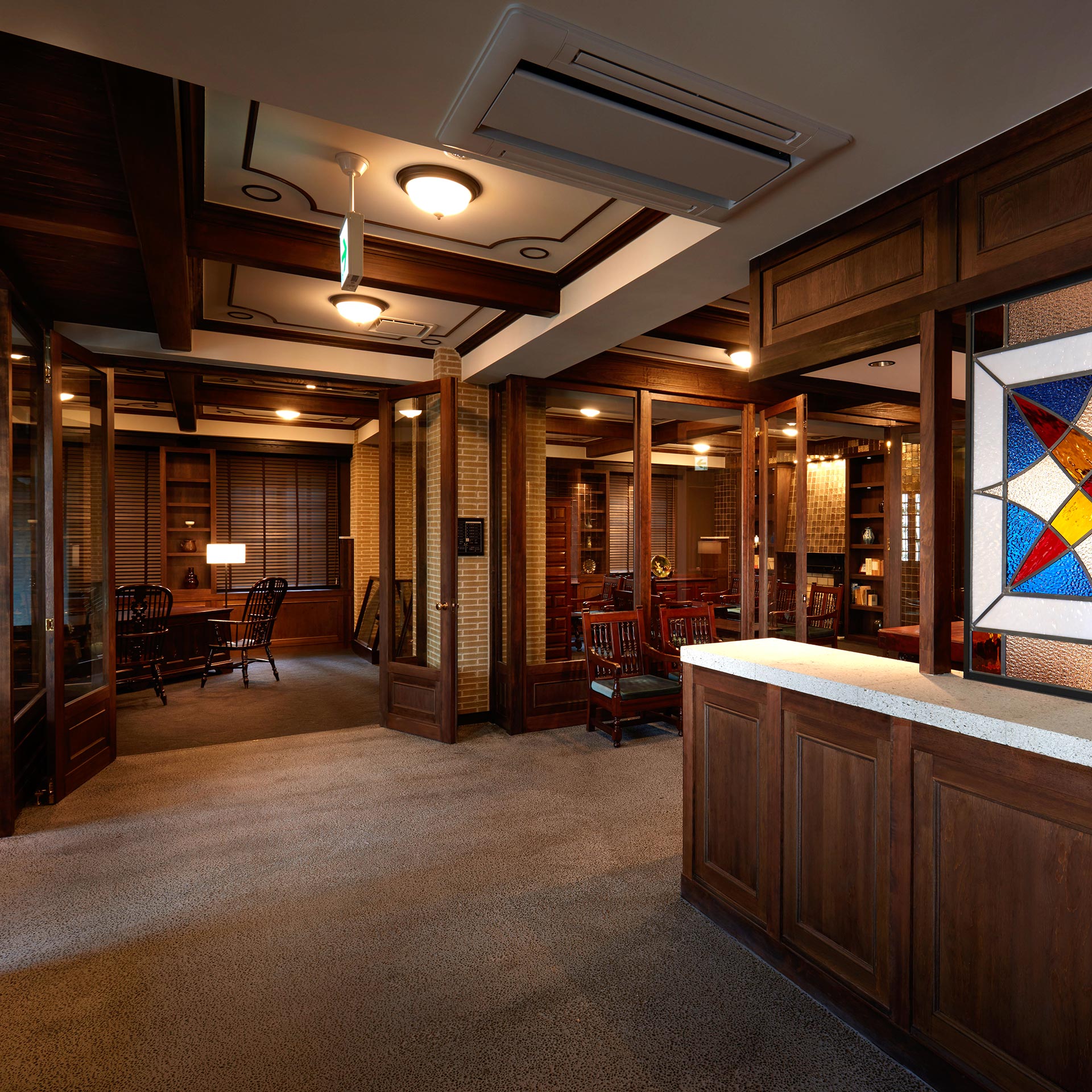
The castle was built as a strategic fortress for defending the territory against attacks that occurred during the tumultuous Sengoku Period. Matsumoto Castle’s ‘Tenshu’ (the highest tower in the castle), the ‘Watariyagura’ (passageway tower), and Inui Tower were all built toward the end of the period to monitor Tokugawa Ieyasu of the Kanto region.
Accordingly, in preparation for battles, these three towers were constructed with 115 small windows through which arrows and guns could be fired. Additionally, a section of the wall on the 1st floor was replaced with 11 windows through which guns could be fired.
The ‘Tatsumitsukeyagura’ and ‘Tsukimiyagura’ towers were built approximately 40 years later, during the early Edo Period, when a more peaceful era resulted in a diminished need to construct for battle preparation. The combination of the old and new towers is the Matsumoto Castle of today. Matsumoto Castle is the only castle in Japan in which towers from two different periods have been unified into one and it thus serves as one important feature of Matsumoto’s history.
Matsumoto Castle Lord History
Ishikawa Family (23 Years)
1石川教正 2石川康長
1 – Kazumasa Ishikawa 2 – Yasunaga Ishikawa
Ogasawara Family (4 Years)
3小笠原秀政 4小笠原忠真
3 – Hidemasa Ogasawara 4 – Tadazane Ogasawara
Toda Family (16 Years)
5戸田康長 6戸田康直
5 – Yasunaga Toda 6 – Yasunao Toda
Matsudaira Family (5 Years)
7松平直政
7 – Naomasa Matsudaira
Hotta Family (4 Years)
8堀田正盛
8 – Masamori Hotta
Mizuno Family (83 Years)
9水野忠清 10水野忠職 11水野忠直 12水野忠周
13水野忠幹 14水野忠恒
9 – Tadakiyo Mizuno 10 – Tadamoto Mizuno 11 – Tadanao Mizuno 12 – Tadachika Mizuno 13 – Tadamoto Mizuno 14 – Tadatsune Mizumoto
Toda Family (142 Years)
15戸田光慈 16戸田光雄 17戸田光徳 18戸田光和
19戸田光悌 20戸田光行 21戸田光年 22戸田光庸
23戸田光則
15 – Mitsuchika Toda 16 – Mitsuo Toda 17 – Mitsuyasu Toda 18 – Mitsumasa Toda
19 – Mitsuyoshi Toda 20 – Mitsuyuki Toda 21 – Mitsutsura Toda 22 – Mitsutsune Toda
23 – Mitsuhisa Toda
Event Information
■Spring Events

◇National Treasure Matsumoto Castle Night Cherry Blossom Viewing
◇National Treasure Matsumoto Castle Cherry Blossom Lighting Event
◇Urasenke Fellowship Gathering – Spring Tea
◇Special Spring Opening of Taikomon (Taiko Gate)
◇National Treasure Matsumoto Castle [Matsumoto Clan Ancient Gunnery Performance]
◇Aoyama Ikebana Outdoor Exhibition / Tea Ceremony ~ Matsumoto City Establishment Anniversary
◇Sekishū Style Tea Ceremony – Matsushiro Gathering
■Summer Events

◇Special Summer Opening of Taikomon (Taiko Gate)
◇National Treasure Matsumoto Castle [Taiko Drum Festival]
◇National Treasure Matsumoto Castle [Music & Performance] ~ An illuminated mysterious world ~
◇Free entrance days for guests dressed in Japanese traditional attire (Kimono etc.)
◇National Treasure Matsumoto Castle [Moonlight Concert]
■Fall Events

◇Shinshu ・ Matsumoto Soba Matsuri (festival)
◇National Treasure Matsumoto Castle [Joint Tea Party]
◇National Treasure Matsumoto Castle [Doll Exhibition]
◇Special Fall Opening of Taikomon (Takio Gate)
◇National Treasure Matsumoto Castle [Ancient Gunnery Performance]
◇National Treasure Matsumoto Castle [Chrysanthemum Exhibition]
◇National Treasure Matsumoto Castle [Youth Kendo & Naginata Competition]
◇National Treasure Matsumoto Castle [Traditional Song & Sword Dance]
◇National Treasure Matsumoto Castle [Youth Samurai Parade]
◇National Treasure Matsumoto Castle Old Castle Drum Performance
◇National Treasure Matsumoto Castle [Fall Tea Ceremony]
◇Festival of the “Legend of the God of Eve of the 26th”
◇National Treasure Matsumoto Castle – Falconry Display
■Winter Events
◇Winter Preparation (Castle greenery dressing for winter, etc.)
◇Kadomatsu (traditional pine decoration) display setting
◇Cleaning and decoration (display of traditional rope decoration)
◇National Treasure Matsumoto Castle [New Year Celebration Ceremony]
◇National Treasure Matsumoto Castle [Ice Carving Festival]
◇Cultural Heritage Site Fire Protection Day [National Treasure Matsumoto Castle Fire Department Training Day]







